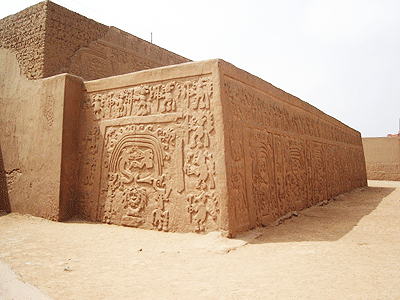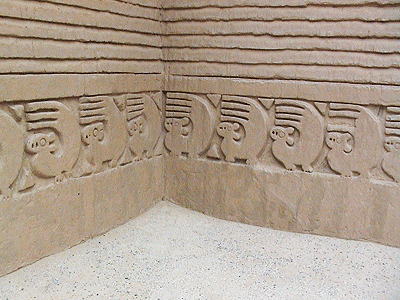
Chan Chan, Laberinto


Chimu Civilization's capital city, Chan Chan was the largest city in South America in Pre-Hispanic America, and today is the largest city in the world built entirely of clay. It was occupied between the 9th and 14th Centuries, C.E. when the Incas conquered it. Located on the Pacific Coast at present-day Trujillo, Peru, Chan Chan was built in one of the most arid coastal deserts in the world. At its cultural zenith, is covered 20 square kilometers (7.7 square miles) and was home to a population of 60,000 inhabitants. Food for the population was grown south of the city in an area of sophisticated irrigation systems. The Laberinto, shown here is just one of city's nine large walled quarters containing plazas, dwellings and storage silos, storerooms, workshops, streets, ramparts and temple pyramids. Chan Chan became a UNESCO World Heritage Site in 1986. Its fragile mud architecture is currently under threat of distruction by the increasing torrential rains of climate change.
Elevation is at sea level along the Pacific shore
Materials: adobe.
Data for CG model:
1. Topic, John, and Moseley, Michael E. 1983; CHAN CHAN: A CASE STUDY OF URBAN CHANGE IN PERU; in Ñawpa Pacha 21(1):153-182, June, 1983.
2. Kolata, Alan L, The Urban Concept of Chan Chan, Published in: The Northern dynasties : kingship and statecraft in Chimor: a symposium at Dumbarton Oaks, 12th and 13th October 1985, edited by Michael E. Moseley and Alana Cordy-Collins





